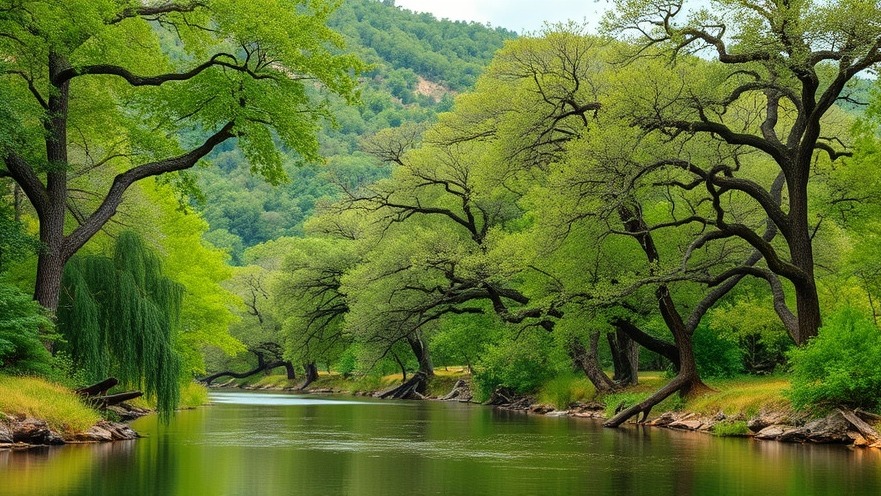
Understanding Why the Hill Country Faces Consistent Flooding
The Texas Hill Country is a picturesque region, characterized by its rugged hills, winding rivers, and breathtaking vistas. Yet, beneath this beauty lies a harsh reality: catastrophic flooding is a regular occurrence. This paradox, where scenic landscapes face perilous weather events, can be attributed to the area's unique geography and hydrology.
The Terrain's Influence on Flooding Events
The Hill Country consists of rocky terrain and steep valleys that exacerbate flash floods. When storms unleash heavy rainfall, water runs swiftly downhill, unable to be absorbed by the ground due to the hard surfaces and steep inclines. Kerr County Judge Rob Kelly succinctly articulated the region’s danger, labeling it "the most dangerous river valley in the United States." This stark title is rooted in a history of devastating floods that have claimed lives and caused severe damages.
A Historical Perspective: Tragedy Repeats
Historically, flood disasters have marked the history of Texas Hill Country. One particularly devastating flood in 1932 claimed seven lives and caused damages amounting to over 500,000 dollars (approximately 11.8 million today). As the years went by, the floods did not cease. In 1978, a tropical storm led to another deadly flood, drowning 33 people and causing extensive property damage. Tragically, such events have often caught residents unprepared, underscoring a repeated cycle of warning, surprise, and loss.
The Deceptive Nature of the Climate
For many newcomers, the semi-arid climate of the Hill Country can be misleading. The hot, dry conditions appear at odds with the potential for flooding, creating a false sense of security. Todd Votteler, a water policy expert, highlights this disconnect, pointing out that many might not realize that this region often experiences severe flood events. The climate, combined with the hydrology of the rivers, creates conditions ripe for disaster.
Recent Floods: A Reminder of Vulnerability
Recent events, such as the flooding during the July Fourth weekend and the tragic Memorial Day weekend flood in 2015, serve as a crucial reminder of the Hill Country's vulnerabilities. The former saw the Guadalupe River rise 35 feet in just a few hours, leading to significant destruction along its banks. Similarly, the 2015 flood inundated Wimberley and claimed 13 lives as floodwaters overwhelmed the reach of the local infrastructure. Each of these floods serves to awaken discussions about preparedness and response.
The Call for Better Preparedness
In light of these tragedies, a critical question surfaces—how can communities in the Hill Country better prepare for flooding? Communication of risks, improved infrastructure, and community readiness initiatives are essential tools in combating flooding disasters. As Matthew Berg emphasizes, rivers hold a memory that must be respected. Comprehensive emergency response plans and education about the region’s historical flooding risks can empower residents to take proactive measures against such threats.
Conclusion: Embracing the Challenge
The history of flooding in the Texas Hill Country starkly illustrates an essential truth: we must learn from our past to prepare for our future. Awareness, preparedness, and robust response mechanisms can transform our communities into resilient havens in the face of environmental challenges. Texas residents are encouraged to engage with local authorities to understand better their flood plans and enhance community resilience.
 Add Element
Add Element  Add Row
Add Row 



Write A Comment